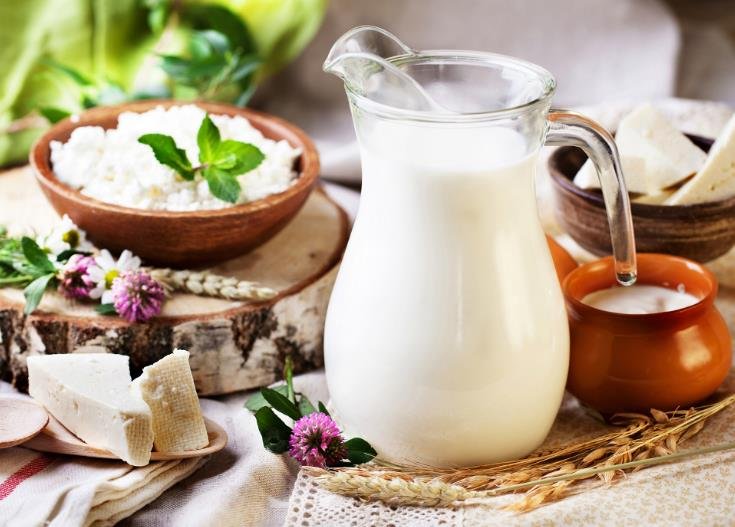Welcome, food enthusiasts! If you’re a steak lover looking to elevate your culinary game, you’ve come to the right place. The art of preparing a dry-aged steak is both a science and an adventure, a journey that takes you through the delightful nuances of taste and texture.
You might be wondering, why should I learn to cook dry-aged steak? Dry-aged steak provides a depth of flavor that’s unparalleled, with a tenderness that melts in your mouth. This unique taste profile is achieved through the aging process, where the beef is left to dry for several weeks. It’s a gourmet delicacy that, when cooked right, can turn any meal into a special occasion. By following our comprehensive guide, you’ll not only learn to cook this exquisite dish but also understand its essence. So, let’s dive into the world of dry-aged steak and make your kitchen the newest steakhouse in town!
What is Dry-Aged Steak?
Dry-aged steak is a culinary luxury that has been appreciated by food connoisseurs for centuries. It refers to beef that has been hung or placed on a rack to dry for several weeks. This process is known for enhancing the flavor of the meat, making it richer and more robust. The dry-aging process also tenderizes the steak, giving it a buttery texture that’s hard to achieve with other cooking methods.
The magic behind the transformation of a regular piece of beef into a dry-aged steak lies in the science of aging. As the beef dries, moisture evaporates from the muscle, concentrating its flavor. At the same time, natural enzymes in the meat break down the fibrous, connective tissue, making the steak more tender.
According to a study published in the Journal of Food Science, dry-aging can improve the tenderness and flavor of beef significantly compared to fresh beef. The research showed that dry-aged beef had a more intense flavor and tenderness than their fresh counterparts. So, when you choose to cook a dry-aged steak, you’re not just preparing a meal; you’re creating a gastronomic experience that goes beyond the ordinary.
Importance of Quality Ingredients for Dry-Aged Steak
When it comes to cooking a dry-aged steak, the quality of your ingredients can make or break the dish. The steak itself is obviously the star of the show, but the other ingredients you use also play a crucial role in bringing out the best flavors. Selecting high-quality, fresh ingredients will help you create a dry-aged steak that’s truly worthy of a gourmet dinner.
Choosing the right cut of beef for dry-aging is the first step. Premium cuts such as ribeye, striploin, or sirloin are often used for dry-aging because they have a good balance of fat and muscle, which contributes to the flavor and tenderness of the steak.
In addition to the steak, the salt, pepper, and oil you use for seasoning and cooking also matter. Opt for sea salt or kosher salt instead of regular table salt for a better flavor profile. Freshly ground black pepper will provide a more robust taste compared to pre-ground pepper. As for the cooking oil, choose one with a high smoke point like grapeseed or avocado oil.
Remember, the goal of dry-aging is to concentrate the natural flavors of the beef. Therefore, your ingredients should serve to enhance these flavors, not overpower them. So, take the time to source the best ingredients, and you’ll be rewarded with a dry-aged steak that’s simply divine.
The Art of Seasoning Your Dry-Aged Steak
When it comes to dry-aged steak, the seasoning process is an art in itself. It’s a delicate balance of enhancing the rich, concentrated flavors of the meat without overpowering them. The right seasoning can elevate your dry-aged steak from good to unforgettable.

How to Cook Dry-Aged Steak: A Comprehensive Guide
Here are the steps to perfectly season your dry-aged steak:
-
Let the steak come to room temperature: Before you start seasoning, let your steak rest until it reaches room temperature. This ensures even cooking and helps the seasoning adhere better.
-
Pat the steak dry: Use a paper towel to pat the steak dry. This removes any excess moisture that could prevent the seasoning from sticking to the steak.
-
Season generously with salt: Sprinkle a generous amount of coarse sea salt or kosher salt on both sides of the steak. Salt enhances the beef’s natural flavors and helps form a delicious crust when searing.
-
Add freshly ground pepper: Grind some black pepper over the steak. The spiciness of the pepper complements the savory flavors of the dry-aged steak.
-
Drizzle with oil: Just before cooking, drizzle a bit of high-smoke point oil over the steak. This helps prevent sticking and adds a nice sheen to the finished steak.
Remember, the goal of seasoning is to enhance the natural flavors of the dry-aged steak, not to mask them. So, keep it simple and let the quality of your steak shine through. By following these steps, you’ll be well on your way to achieving a beautifully seasoned, restaurant-quality dry-aged steak at home.
Searing Your Dry-Aged Steak: The Perfect Technique
A perfectly seared dry-aged steak is the epitome of a gourmet dish. The searing process forms a delicious crust on the surface, which not only gives the steak an appetizing look but also enhances its flavor. This technique requires a high level of heat and precise timing to achieve the right balance between the sear and the desired level of doneness.
To sear your dry-aged steak perfectly, follow these steps:
- Preheat your pan: Use a heavy-bottomed pan or skillet and heat it over high heat until it’s smoking hot.
- Add oil to the pan: Add a small amount of high-smoke point oil like grapeseed or avocado oil. Make sure the oil coats the bottom of the pan evenly.
- Place the steak in the pan: Carefully place your seasoned steak in the hot pan. It should sizzle immediately, indicating that the pan is hot enough.
- Sear the steak: Allow the steak to sear undisturbed for about 2-3 minutes on each side for a medium-rare finish. Adjust the timing based on your preferred level of doneness.
- Flip the steak: Use tongs to flip the steak. Avoid using a fork as it can pierce the meat and cause it to lose its juices.
- Sear the other side: Sear the other side of the steak for the same amount of time.
Searing is an art that requires practice. But once you master it, you’ll be able to create a restaurant-quality crust on your dry-aged steak that locks in the juices and enhances the overall flavor of the steak. Remember, the ultimate goal is to enhance the natural flavors of the steak, not overpower them. With patience and the right technique, you’ll soon be searing dry-aged steaks to perfection.
Cooking Dry-Aged Steak in the Oven: Step by Step
Cooking a dry-aged steak in the oven is an excellent method to achieve a consistent and perfectly cooked steak. This technique combines searing the steak on the stovetop for a flavorful crust and finishing it in the oven for a precise level of doneness. This method allows better control over the temperature, ensuring that your dry-aged steak is cooked to perfection every time.
To cook your dry-aged steak in the oven, follow these steps:
- Preheat your oven: Preheat your oven to 400°F (200°C). A high temperature is crucial to ensure that the steak cooks evenly.
- Sear the steak: Sear your seasoned steak in a hot pan on both sides to create a delicious crust. This should take about 2-3 minutes per side.
- Transfer to the oven: After searing, transfer the steak in the pan directly into the preheated oven.
- Cook in the oven: Cook the steak in the oven for about 10-15 minutes for medium-rare. Adjust the timing based on your preferred level of doneness.
- Rest the steak: Once the steak is cooked to your liking, remove it from the oven and let it rest for at least 10 minutes before serving. This allows the juices to redistribute throughout the steak.
Cooking a dry-aged steak in the oven might seem intimidating at first, but with these steps, you’ll find it’s quite straightforward. The key is to monitor the steak closely to prevent overcooking. With practice, you’ll be able to achieve a restaurant-quality dry-aged steak right in your home kitchen.
Alternative Cooking Methods: Sous Vide and Grilled Dry-Aged Steak
While searing or oven roasting are common ways to cook dry-aged steak, alternative methods such as sous vide and grilling offer unique flavors and textures. Sous vide is a precise cooking technique that involves a water bath, while grilling imparts a smoky flavor that’s hard to replicate with other methods.
Sous vide cooking involves vacuum-sealing the steak in a bag and submerging it in a water bath set to a specific temperature. This technique provides exceptional control over the cooking process, ensuring an evenly cooked steak with a tender texture. Once the sous vide process is complete, the steak is typically seared in a hot pan to create a delicious crust.
Grilling a dry-aged steak offers a different culinary experience. The high heat from the grill quickly forms a flavorful crust on the steak, while the interior remains juicy and tender. Particularly when using a charcoal grill, the steak acquires a distinct smoky flavor.
In conclusion, sous vide guarantees precision and consistency, making it ideal for those who prefer a tender and evenly cooked steak. Conversely, grilling a dry-aged steak presents a smoky flavor and a crisp exterior, which will appeal to those who enjoy these characteristics. Both methods can deliver a fantastic dry-aged steak, depending on your personal preferences and desired outcomes.
Tips and Tricks to Master the Dry-Aged Steak Recipe
Mastering the art of cooking a dry-aged steak can take some practice. However, there are several tips and tricks that can help you achieve restaurant-quality results at home. These tips range from how to select the perfect steak to cooking techniques and methods.
Choosing Your Steak: Selecting a high-quality dry-aged steak is crucial. Look for a steak that has been dry-aged for at least 21 days for optimal flavor and tenderness. The steak should have a rich, deep color and a firm texture.
Seasoning: When it comes to seasoning, simplicity is key. A little salt and pepper is often all you need to enhance the flavor of the steak. It’s best to season your steak just before cooking to avoid drawing out moisture.
Cooking Techniques: Experiment with different cooking methods like sous vide or grilling to find one that suits your taste preferences. Remember, the key to a great steak is to cook it at a high temperature to form a crust and then finish it at a lower temperature to achieve the desired level of doneness.
Resting the Steak: After cooking, allow your steak to rest for at least 10 minutes before slicing. This allows the juices to redistribute throughout the steak, resulting in a juicier and more flavorful bite.
Tools: Invest in a good quality meat thermometer. It will take the guesswork out of cooking and ensure your steak is cooked to your preferred level of doneness.
These tips and tricks can greatly enhance your dry-aged steak cooking experience. With practice and patience, you’ll soon be able to master the art of cooking a perfect dry-aged steak at home.
To Wrap Up
In conclusion, cooking a perfect dry-aged steak is an art that can be mastered with the right knowledge and techniques. Whether you prefer the precision of sous vide or the smoky flavor of grilling, both methods can yield delicious results. Remember, the quality of your steak and the attention to detail in its preparation are key to creating a dish that’s sure to impress.
As you embark on your steak-cooking journey, don’t be afraid to experiment. Try different methods, seasonings, and cooking times to discover what yields the best results for you. With practice and patience, you’ll soon master the art of cooking dry-aged steak. So, here’s to many delightful culinary adventures ahead!
Frequently Asked Questions
[faq-schema id=”1325″]
















